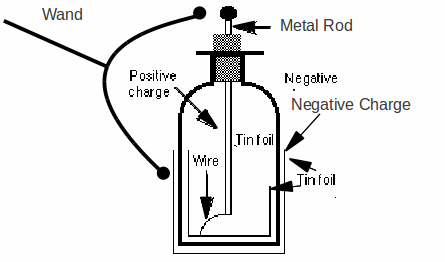The Leyden jar was the first practical capacitor capable of storing electric charge. They were invented in 1746 in the Dutch university town of Leyden when the scientist Pieter van Musschenbroek was investigating to see if electric charge could be stored in water. He left a wire dangling into the jar held in one hand. When he touched the wire with the other hand, he received an electric shock.

A modern jar uses an insulated conducting 'wand' and a jar coated inside and out with a layer of metal foil. Water is replaced by a wire from to the inner foil coating.

The Leyden jar soon replaced prime conductors as devices to store electric charge.